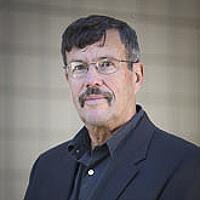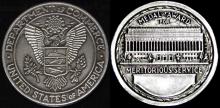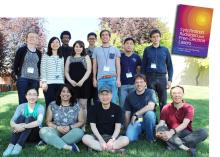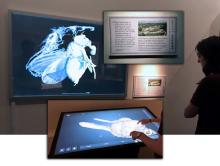2017
The Argonne Guest House will be closed beginning Monday, December 18, 2017, and will re-open Monday, February 5, 2018, due to building maintenance.
Argonne National Laboratory’s Center for Nanoscale Materials, a U.S. Department of Energy, held a successful 10th Anniversary Symposium on October 27, 2017.
Robert O. Hettel has been appointed director of the Advanced Photon Source Upgrade Project at Argonne National Laboratory. He will join Argonne in November 2017. Hettel, a veteran accelerator designer and expert on storage ring light sources, comes to Argonne from SLAC National Accelerator Laboratory, a U.S. Department of Energy Office of Science Laboratory that includes the Stanford Synchrotron Radiation Lightsource. In his new role, Hettel will oversee the planning, construction and implementation of the Upgrade of Argonne’s Advanced Photon Source, a U.S. Department of Energy Office of Science User Facility. This $770 million project will create the world’s ultimate three-dimensional microscope and enable researchers to view and manipulate matter at the atomic level to solve complex science problems across multiple disciplines.
Under conventional magnification, the crystals Aaron Robart grows in his West Virginia University (WVU) lab may look like simple rock salt, but by bombarding them with x-rays, he and his research team can build computational models that reveal the molecules within. On August 22, Robart, assistant professor of biochemistry in the WVU School of Medicine, used the powerful Advanced Photon Source at the U.S. Department of Energy’s Argonne National Laboratory in Chicago to zap three types of life-sustaining crystals with x-rays, revealing molecular structures that resemble tangles of corkscrew pasta or patterns of daisies.
And he did it without leaving Morgantown, West Virginia.
The first Jan Evetts Award for the best paper by a young researcher published in the journal Superconductor Science and Technology has been awarded to Ibrahim Kesgin of the U.S. Department of Energy Office of Science’s (DOE-SC’s) Advanced Photon Source at Argonne National Laboratory. First-author Kesgin’s paper is entitled, “High-temperature superconducting undulator magnets.” His co-authors are Matthew Kasa and Yury Ivanyushenkov, all of the Accelerator Systems Division of the Argonne Advanced Photon Source, and Ulrich Welp of the Argonne Materials Science Division.
The Next Advanced Photon Source proposal deadline is 11:59 pm, October 27, 2017.
Argonne National Laboratory has recently implemented an access policy (LMS-POL-59) for minors (defined as anyone under the age of 18) coming to the Lab for research-focused visits, educational and outreach programs, tours, and personal visits. The Advanced Photon Source (APS) would like to make the user community aware of some general requirements and guidelines for common types of visits by minors here at the facility.
Printed copies of “APS Science 2016” are now available.
The Center for Nanoscale Materials (CNM) is soliciting proposals for user-initiated nanoscience & nanotechnology research. The CNM provides external users with access to a broad range of capabilities for design, synthesis, characterization, and theory & modeling in order to significantly advance the understanding of nanoscale phenomena and develop functional nanoscale systems. Access is provided at no cost to users for research that is in the public domain. Deadline for submission: October 27, 2017
John M. Byrd accepted the position of Advanced Photon Source Accelerator Systems Division Director in the Argonne Photon Sciences Directorate, effective July 3, 2017.
The 2017 National School on Neutron & X-ray Scattering will be held on August 5-August 19, 2017, at the APS and the ORNL Spallation Neutron Source and High Flux Isotope Reactor.
Read "All-nighters for Science," an account of an overnight shift during a recent user-beam run at the APS.
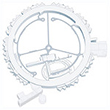
Registration for the 2017 APS/CNM Users Meeting is open! Please note that the late-registration rate begins on April 22.
NIST scientists recognized for their groundbreaking work on microstructure and dynamics in materials over many length scales under real-world conditions used the USAXS instrument at the APS.
Kwang-Je Kim and Ryan Lindberg, and Zhirong Huang of SLAC are co-authors of a new textbook, "Synchrotron Radiation and Free-Electron Lasers: Principles of Coherent X-Ray Generation."
Two users of the APS were named “Breakthrough Prize” winners in life sciences.
Deming Shu (XSD-ADM) was one of the recipients of a 2016 R&D 100 Award for development of the Hard X-Ray Scanning Microscope with Multilayer Laue Lens Nanofocusing Optics.
Results from research on the Tully monster and amber pieces carried out at the APS are featured in a new exhibit in Chicago’s Field Museum of Natural History.
Researchers at the APS have discovered a new approach to detail the formation of these material changes at the atomic scale and in near-real time.
At the end of every fiscal year, the APS User Office sends a questionnaire and survey to those that have used the APS in the past year.



